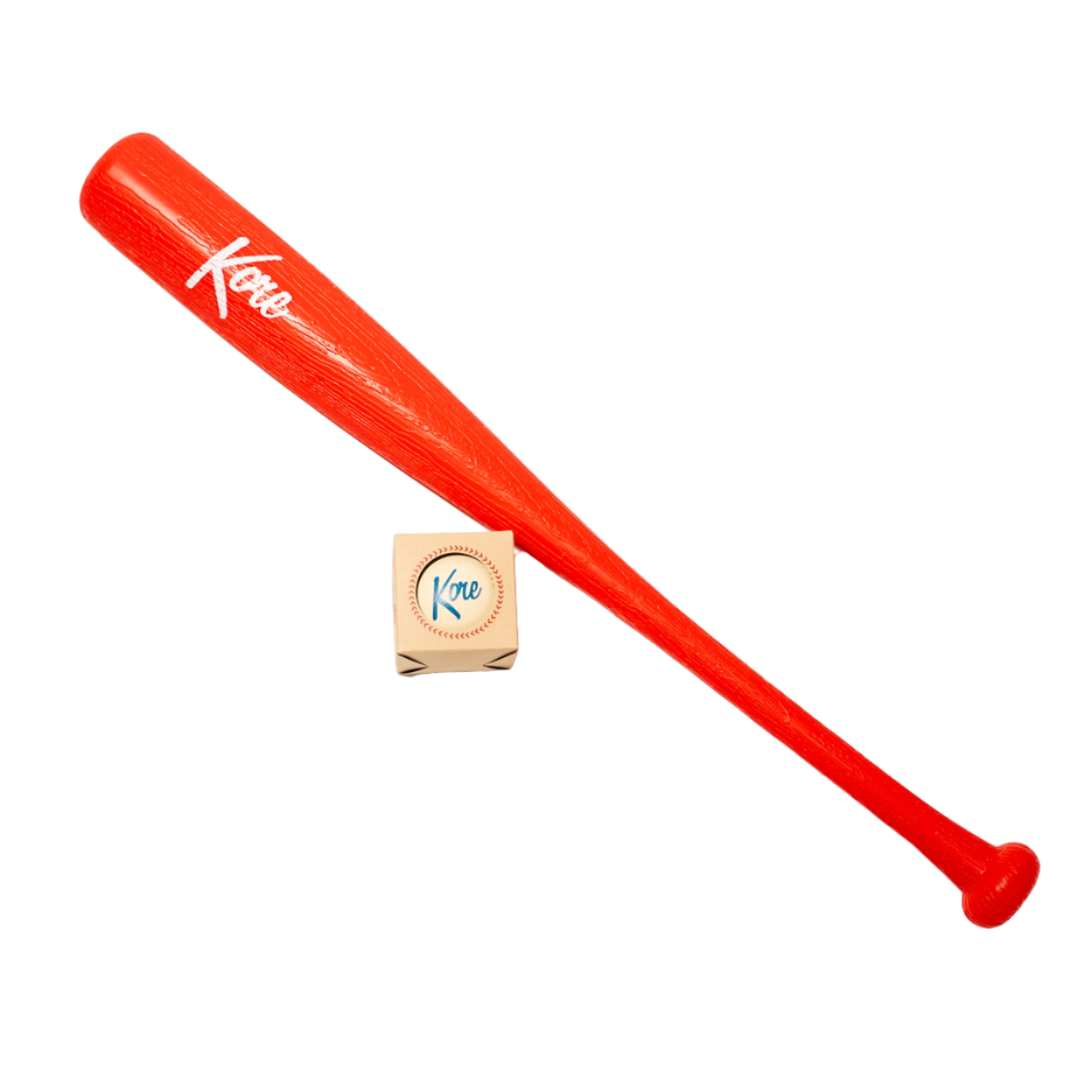
If you're new to the game of baseball, you may be wondering, "How many players are on a baseball team?" Understanding the roster size and player positions is essential to grasp the dynamics of the sport. In this article, we will dive into the specifics of how many players make up a baseball team and the various positions they play. Whether you're a player, a parent, or a curious fan, this guide will provide you with a comprehensive overview of the team structure in baseball.
The Standard Roster Size: How Many Players on a Baseball Team?
In the world of baseball only 9 players are allowed in the field at once, however, the standard roster size for a team can vary depending on the level of play. In Major League Baseball (MLB), teams typically consist of 25 active players during the regular season. Although, during expanded rosters in September, teams can have up to 40 players. In contrast, college and high school baseball teams often have larger rosters to accommodate for substitutions and player development. College teams typically have around 35 players, while high school teams can range from 15 to 30 players. Understanding the roster size is crucial as it determines the number of players available to contribute to a game and the strategic decisions made by the coaching staff.
Exploring the Various Positions in a Baseball Team
A baseball team consists of several positions, each with its unique responsibilities and requirements. Understanding the roles of each position can provide insights into the dynamics of the game and the strategic decisions made by coaches. Let's delve into the primary positions in a baseball team:
-
Pitcher: The pitcher is a central figure in a baseball team, responsible for throwing the ball to the batter from the pitcher's mound. They play a vital role in dictating the game's pace, controlling the opposing team's offense, and setting the tone for the entire team. Pitchers need to possess a strong throwing arm, accuracy, and the ability to throw a variety of pitches with different speeds and movements.
-
Catcher: The catcher takes their position behind the plate and is involved in almost every play. They receive the pitches from the pitcher, call the game by selecting appropriate pitches, and play a significant role in defense. Catchers must have excellent communication skills to coordinate with the pitcher and other fielders, as well as quick reflexes to stop wild pitches or catch baserunners stealing bases.
-
Infielders: Infielders consist of the first baseman, second baseman, shortstop, and third baseman. They play in the area known as the infield, located between the bases. Infielders must have excellent defensive skills, including quick reflexes, strong throwing arms, and the ability to field ground balls cleanly. They are involved in turning double plays, making accurate throws to the bases, and covering their respective areas effectively.
-
Outfielders: Outfielders cover the vast area beyond the infield, including left field, center field, and right field. Their primary responsibility is to catch fly balls and prevent hits from turning into extra bases. Outfielders must possess excellent speed, agility, and a strong throwing arm to make accurate throws to their teammates on the infield or home plate. Their ability to track fly balls, make diving catches, and throw out baserunners is crucial in defense.
-
Designated Hitter (DH): In leagues that use the designated hitter rule, a designated hitter is employed to bat in place of the pitcher. This position allows a strong hitter to focus solely on offense, enhancing the team's scoring potential. The designated hitter does not play in the field but is a key contributor to the team's offensive strategy.
Each position in a baseball team brings its unique set of skills and responsibilities to contribute to the team's success. Understanding these roles enables fans and players to appreciate the intricacies of the game and the diverse talents displayed on the field
Why are there so Many Bench Players in Baseball?
The prevalence of bench players in baseball can be attributed to several factors that contribute to the game's unique strategic nature. Firstly, baseball is a long and grueling season that spans over 162 games, requiring teams to manage player workload effectively. By having bench players, teams can provide regular starters with much-needed rest and avoid overexertion, reducing the risk of injuries and keeping players fresh for crucial moments in games. Bench players also serve as valuable substitutes during games, allowing managers to make strategic decisions based on matchups, such as bringing in a pinch hitter to face a specific pitcher or inserting a defensive specialist to protect a lead. Furthermore, baseball rosters are built to accommodate various skill sets and positions, ensuring teams have depth and versatility to address different game situations. Bench players often specialize in specific roles, such as defensive replacements, pinch runners, or utility players who can fill multiple positions, providing managers with tactical flexibility. Finally, with the rise of advanced analytics in baseball, teams place great emphasis on statistical analysis and data-driven decision-making. This has led to increased reliance on bench players who may possess favorable matchups or perform exceptionally well in specific situations, allowing teams to exploit favorable outcomes. In conclusion, the multitude of bench players in baseball reflects the sport's strategic depth, long season, and the need for flexibility and specialization to maximize team performance.
Due to the demanding nature of pitching in baseball, having a large number of players on a 40-man roster provides significant advantages to teams in terms of pitching depth and flexibility. Pitchers are prone to injuries and fatigue due to the repetitive stress on their arms, making it crucial for teams to have a surplus of arms available. With a deep pitching staff, teams can strategically manage the workload of their pitchers, implementing pitch counts, rest days, and rotation adjustments to optimize performance and minimize the risk of injuries. Additionally, a larger pool of pitchers allows teams to experiment with different pitching strategies, such as utilizing specialized relievers or employing a bullpen-by-committee approach. Having more pitchers on the roster also provides a safety net in case of injuries or ineffectiveness, allowing teams to seamlessly replace struggling pitchers or provide opportunities for younger players to develop. Ultimately, a robust pitching staff, made possible by a 40-man roster, enhances a team's ability to compete at a high level throughout the grueling baseball season.
Do all players on a 40-man roster get paid?
Yes they all receive some sort of compensation.On a 40-man roster in Major League Baseball (MLB), not all players receive the same level of compensation. While players on the active roster typically earn a salary for their time spent playing in games, players on the injured list or those in the minor leagues might receive different forms of compensation or have their salaries adjusted. The MLB has a minimum salary for players on the active roster, ensuring that they receive a fair compensation for their services. However, players in the minor leagues often earn considerably less than those in the majors, reflecting the developmental nature of their roles. Additionally, players on the injured list may receive a portion of their salary or be subject to specific rules outlined in the collective bargaining agreement between the league and the players' union. Therefore, while all players on a 40-man roster are part of the team, the specifics of their compensation may vary based on their status and the agreements in place.
Team Composition and Game Strategy: Impact of Player Numbers
The number of players on a baseball team has a significant impact on game strategy and decision-making. With a larger roster, teams have more options for substitutions, allowing them to strategically replace players based on matchups or situational needs. Coaches can make tactical decisions such as bringing in a relief pitcher to face a specific batter or substituting a defensive specialist in crucial moments. The depth of a team's roster also affects the level of competition during practices, as players strive to earn playing time and contribute to the team's success. Additionally, injuries and player fatigue can influence roster management, requiring teams to adapt and utilize their available resources effectively. Understanding the dynamics of team composition and the strategic implications of player numbers can provide valuable insights into the complexities of the game.
Balancing Individual Roles and Team Dynamics
While baseball is often seen as an individual sport within a team context, the success of a baseball team depends on the collective effort of all players. Each player has a specific role and responsibilities within the team structure, whether it's hitting for power, being a defensive anchor, or excelling in situational plays. Finding the right balance between individual roles and team dynamics is crucial for a team's overall performance. Effective communication, trust, and a shared commitment to team goals are essential in creating a cohesive unit. Understanding and embracing individual strengths and weaknesses allows players and coaches to optimize team performance. A blend of individual talents, strategic planning, and a unified team mindset is the recipe for success on the baseball field.
Team Size and Player Development: Opportunities for Growth
The size of a baseball team provides opportunities for player development and growth. With a larger roster, teams can foster healthy competition among players, pushing each individual to strive for improvement. Players can learn from one another, exchanging knowledge and techniques, which ultimately contributes to the overall skill level of the team. Additionally, having more players allows for specialized training and positions, with individuals honing their skills in specific areas such as pitching or catching. Younger or less experienced players can benefit from the mentorship and guidance of more seasoned teammates, accelerating their learning and development process. A well-structured team size creates an environment where players can continuously challenge themselves, refine their skills, and reach their full potential.
The Importance of Team Cohesion in Baseball
In baseball, team cohesion is vital for success on the field. A cohesive team exhibits strong unity, trust, and camaraderie among its members. When players have a strong bond, they are more likely to support and encourage each other, leading to improved communication and teamwork during games. Cohesion enables players to work together seamlessly, anticipating each other's actions and making split-second decisions that can turn the tide of a game. It fosters a positive team culture where players feel valued, respected, and motivated to give their best effort. Coaches play a crucial role in nurturing team cohesion by promoting team-building activities, fostering open communication, and instilling a shared sense of purpose. A cohesive baseball team is not only a force on the field but also a tight-knit group that supports each other through both triumphs and challenges.
The Importance of Bench Players in Baseball Teams
Bench players, also known as reserves or substitutes, play a crucial role in baseball teams despite not being in the starting lineup. Their role is to provide support and fill in for starters when needed, either due to injuries, rest, or strategic decisions by the coach. Bench players must be prepared mentally and physically to step into the game at a moment's notice, adapting quickly to the flow of the game. They often possess specific skills that complement the team's needs, such as defensive specialists, pinch hitters, or pinch runners. A strong bench adds depth to the team's roster, providing flexibility and options for the coach to make in-game adjustments. Furthermore, bench players contribute to team chemistry by maintaining a positive attitude and supporting their teammates from the dugout. Their contributions may not always be in the spotlight, but their readiness and preparedness significantly contribute to the overall success of the team.
Will the MLB ever Change the Number of Players Allowed in the Field?
Will the MLB ever change how many people are allowed in the field? While it's impossible to predict the future with certainty, it is unlikely that Major League Baseball (MLB) will make significant changes to the number of players allowed on the field. The current configuration of nine players on defense has been a fundamental aspect of baseball for well over a century. This setup provides a balanced dynamic between offense and defense, with each player having a specific role and responsibility within the team structure. Moreover, changing the number of players on the field would require extensive rule modifications, affecting the game's traditions, strategies, and historical records. Any potential changes would likely face significant resistance from fans, players, and baseball purists who cherish the game's traditional structure. While the MLB has made adjustments to other aspects of the game over the years, such as the designated hitter rule or expanded rosters, the fundamental composition of nine players on the field has remained a timeless feature of baseball.
Ultimately, understanding the different positions in a baseball team is essential for players, coaches, and fans alike. Each position carries specific responsibilities and requires distinct skills to excel. From the pitcher controlling the game's pace to the catcher directing the defense, the infielders making precise plays, the outfielders covering vast areas, and the designated hitter adding offensive firepower, every position contributes to the team's overall performance.
By recognizing the importance of each role and appreciating the unique abilities required, individuals can deepen their understanding and enjoyment of the game. Whether you're a player looking to specialize in a particular position or a fan following the strategies and performances of your favorite team, recognizing the significance of each position enhances the overall baseball experience.
So, the next time you watch a baseball game or step onto the field, take a moment to observe the various positions and the players who fill them. Each position is a vital piece of the puzzle, working together to create the excitement and thrill that make baseball such a beloved sport.





